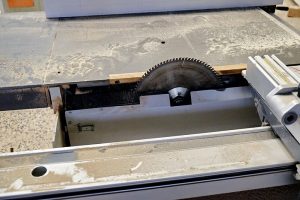Calls intensify for ban on lethal engineered stone
Unions, along with medical professionals and health and safety experts, have amplified their call for a full ban on all engineered stone products that contain deadly silica in latest submissions to Safe Work Australia.
Inhaling crystalline silica dust while cutting, grinding or drilling the engineered stone used for kitchen or bathroom benches can lead to silicosis, an incurable and aggressive lung disease.
“I call today on Workplace Relations Minister Tony Burke to step up, expedite the process, and ban this killer stone,” CFMEU national secretary Zach Smith says.
“We’ve been saying for a long time now that if the government doesn’t ban these benchtops by mid-2024, we will be forced to take matters into our own hands onsite.
“We’ve set a deadline. Either the Minister steps up and fixes this by mid-2024 or our members will just refuse to touch these benchtops on construction sites across Australia. We took this kind of action with the famous green bans of the 1980s and we’re prepared to do it again.”
Emissions from engineered stone are qualitatively different from natural stone, with experts finding that even engineered stone products with low silica levels are still highly dangerous; having been linked to other diseases, including cancer.
Engineered stone is not an essential building material and there are many safe alternatives.
“Engineered stone is a fashion product that is killing the workers who make it. With alternatives readily available, why are we risking the lives of tradies for a fashionable finish in our kitchens?” ACTU assistant secretary Liam O’Brien says.
“Industry has failed to demonstrate that engineered stone products can be worked with safely. A full ban on all engineered stone, irrespective of silica content, is necessary to protect workers from incurable and deadly silicosis. This ban will save lives.”
The independent research suggests that certain components within engineered stone may contribute to the type of accelerated silicosis seen in stonemasons working with this product.
Research and modelling also reveal:
– One in four stonemasons who work with engineered stone products have contracted silicosis
– More than 100,000 workers will be diagnosed with silicosis in the coming decades, with a significant proportion coming from the engineered stone industry
– A further 10,000 workers will be diagnosed with other cancers.
In submissions to Safe Work Australia, unions, medical and health and safety experts recommend:
– A prohibition of all engineered stone products regardless of silica content; the only exemption would be for managing or removing stone already in situ (this is like the approach to asbestos)
– Planning to ensure the safety of workers involved in removing or remodelling engineered stone; a licensing scheme should be introduced to ensure these activities are conducted safely.
“Based on the available scientific literature and information, a percentage of crystalline silica that is protective of worker health, or ‘safe’, cannot be determined,” Australian Institute of Occupational Hygienists president Tracey Bence says.
“Recent studies have shown that even when using methods like wet cutting and ventilation, workers are still exposed to too much silica dust. This means workers need to wear respiratory protection.
“It’s not just about the amount of crystalline silica, there are other factors, including other components of the material that can cause harm to workers. A precautionary approach is warranted, and we are therefore supportive of a prohibition on the use of all engineered stone, irrespective of its crystalline silica content.”

